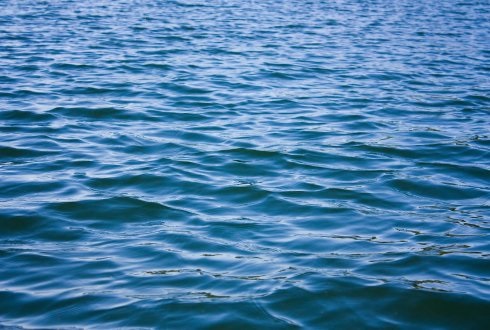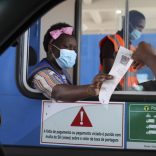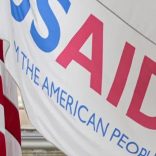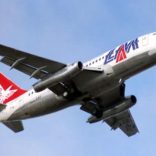Mozambique: Attack on vehicles in Maringue involved machine gun and machetes - police
Mozambique: Authorities record 159 drowned, 109 rescued in 38 marine accidents in 2024

in file CoM
At least 159 people drowned and 109 were rescued in 38 marine accidents in Mozambique in 2024, the maritime transport regulatory authority said on Tuesday, pointing to the occurrence of most cases in wooden and handmade artisanal vessels.
“We still have aspects that need to be improved and that pose a challenge for the sector, namely the continuous occurrence of shipwrecks [marine accidents]. It is not uncommon for these shipwrecks to result in deaths and other fatalities. These are the aspects that concern us, not only as a sector that has to regulate and control these matters, but as a government,” said the chairman of the board of directors of the Maritime Transport Institute (Itransmar), Unaite Mustafa, in an interview with Lusa.
Of the total number of deaths recorded by Itransmar, 98 died on April 7 last year, in the province of Nampula, when a fishing vessel bound for the Island of Mozambique sank after leaving the administrative post of Lunga, Mossuril district.
The head of Itransmar, the maritime transport regulatory authority, pointed to a 26% reduction in the number of shipwrecks in 2024 compared to 2023, when 72 deaths and 173 rescues were recorded.
The majority of shipwrecks in 2024 were recorded, Mustafa said, in the provinces of Zambézia (13), Tete (five) and Sofala (five), all in the centre of the country.
“There is a common factor, which is the type of vessel involved in these maritime accidents. Basically, they are handcrafted wooden vessels, […] vessels that are not inspected or licensed for passenger transport,” Mustafa said, adding that these vessels also use unofficial embarkation and disembarkation points.
“Some of the vessels are not necessarily used to transport passengers and cargo, but rather to do other things. In general, they are wooden, artisanal vessels, some made of hollowed-out tree trunks. These are the ones that have seen most of the shipwrecks,” he explained.
According to Mustafa, last year at least 4,600 vessels were inspected and licensed for various activities in the country, including the transport of people and goods, and around 5,000 are expected to be licensed this year.
To reduce deaths from shipwrecks, the Mozambican government will distribute at least 4,000 life jackets to maritime transporters across the country this year. It admits that the sector cannot afford to acquire life jackets , which costs between 4,000 and 7,000 meticais (€47 to €100) each, according to Mustafa.
Itransmar has at least 15 vessels for maritime inspection, two of which are in Maputo, and the same number for Gaza, Inhambane and Sofala, while Nampula and Zambézia have three each, and Cabo Delgado, one, with plans to acquire two more this year, including other land-based resources for Itransmar delegations.
“The challenge in this inspection component is resources – having operational vessels. In principle, we should operate 24 hours a day to ensure the safety of activities at sea. And this is one of the aspects that we need to improve internally, in terms of inspection itself, with agents spread throughout the country,” admitted the president of Itransmar/
But, he says, the institution has the capacity to inspect the waters of the entire country.
“The capacity exists, given that we do not work in isolation. Inspection activities are an action under the sovereignty of the state and all forces are called upon here. We are there with the coastal, lake and river police, and in some places with the navy,” he concluded.












Leave a Reply
Be the First to Comment!
You must be logged in to post a comment.
You must be logged in to post a comment.